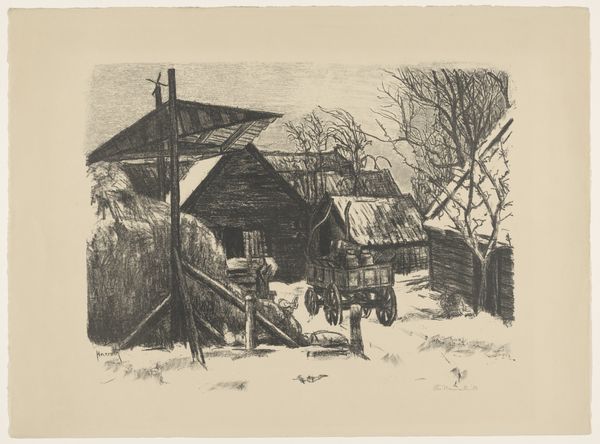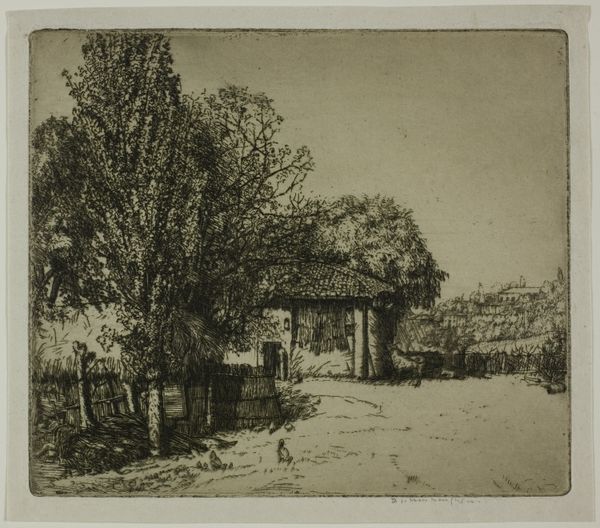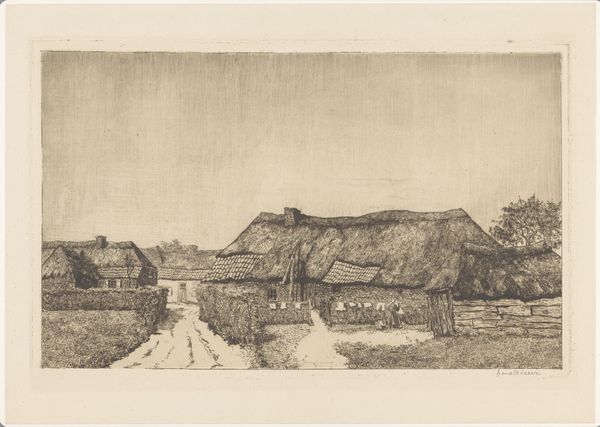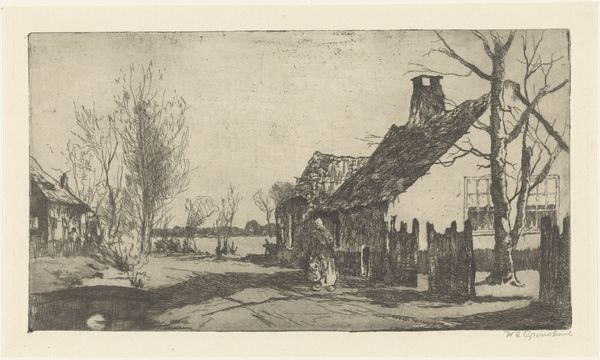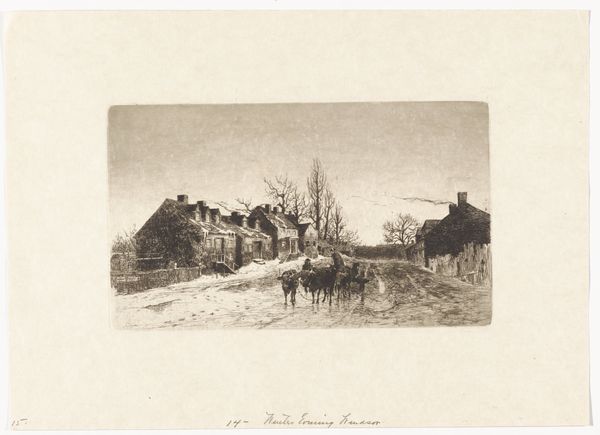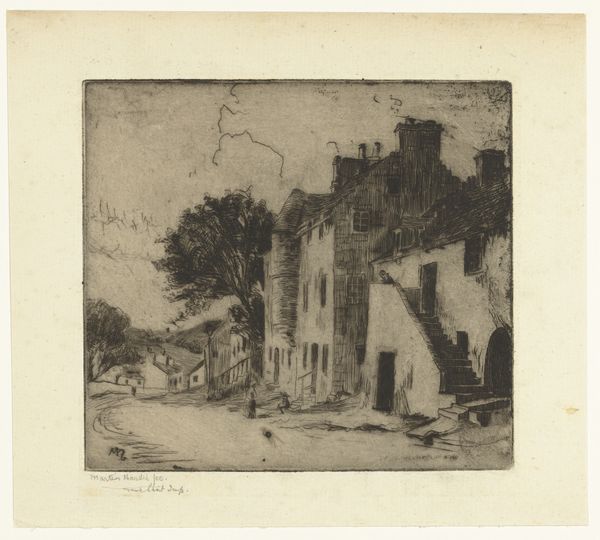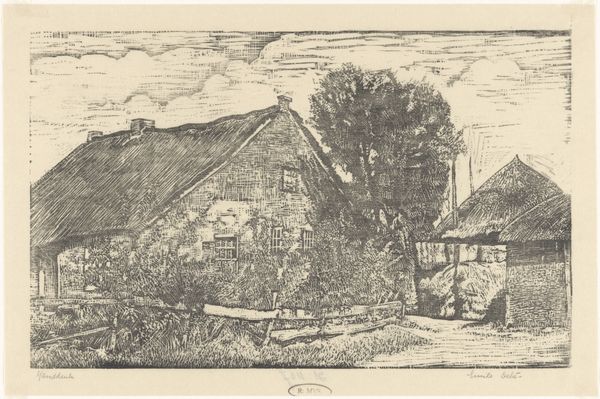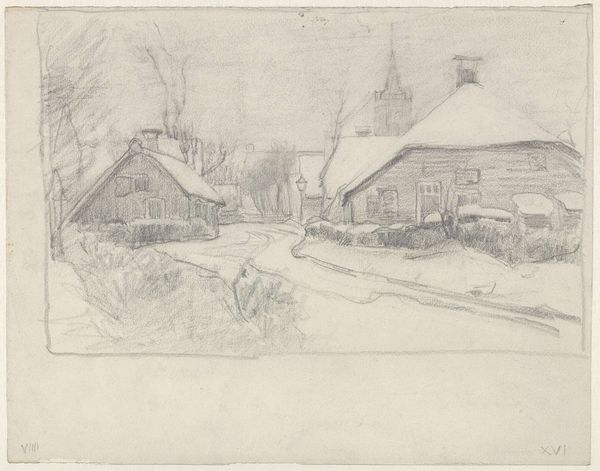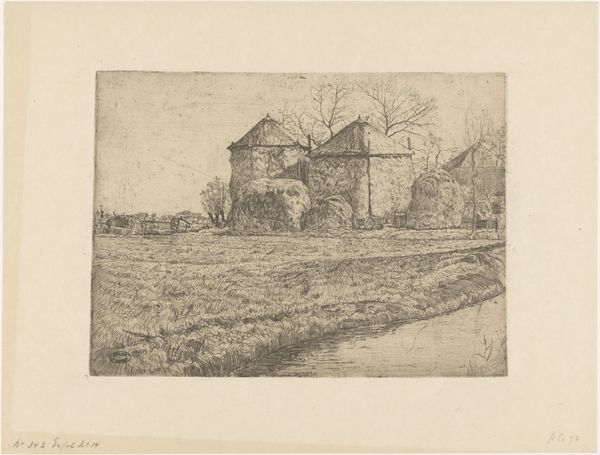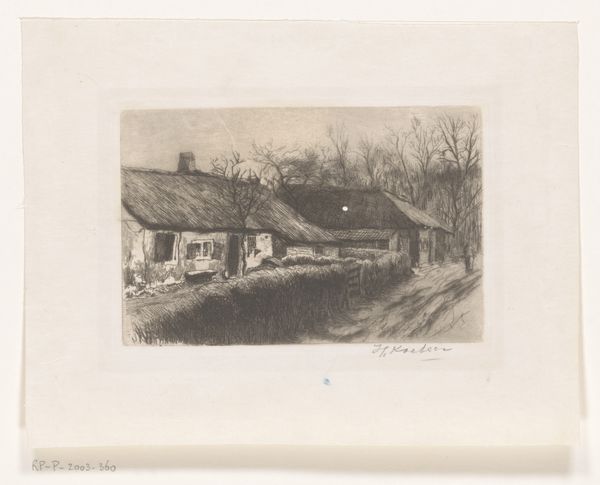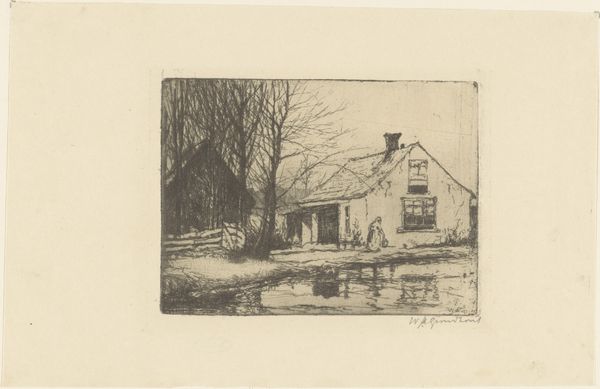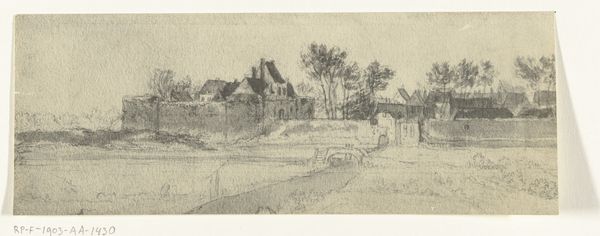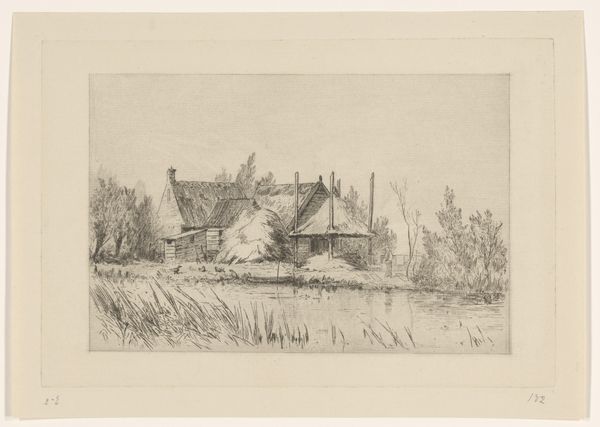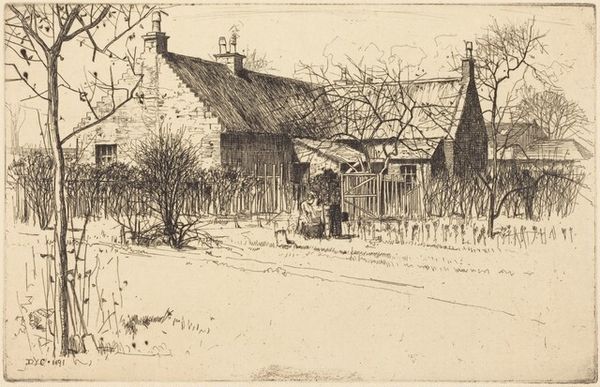
Dimensions: 197 × 267 mm (image/plate); 229 × 284 mm (sheet)
Copyright: Public Domain
Editor: This is Gustave Leheutre's "Low-Seated Peasant Dwelling, Troyes," an etching from 1896. It looks to me like a fleeting glance at rural life. What formal elements strike you most when you look at this print? Curator: Immediately, the density of lines is most prominent, particularly in rendering the thatched roof. Note how Leheutre uses hatching and cross-hatching to create a strong sense of form and shadow. Observe how your eyes follow the movement and energy that leads through the image, giving attention to how light and shadow are arranged in this space. What effect does this energetic composition create for you? Editor: I think the heavy lines against the open areas create a compelling visual contrast. The sharp angles in the architecture play so well with soft landscape elements to enhance a mood of quaint tranquility. Can you speak more on the textures present and the impact these choices made? Curator: The varying textures throughout the composition establish both depth and definition. For instance, observe the smooth paper in the sky and contrast that with the roughness used to render the foreground foliage. By understanding that value plays off of textures, we can see how such techniques further serve to heighten the artwork's formal qualities. How does Leheutre play with scale here? Editor: Good question! I think by situating the buildings closer, more detailed, the relative positioning makes those distant figures along the ridge-line feel more diminutive, which does draw more focus on the detailed thatching on the rooftops and detailing present closer to us. Thank you for offering up so many new perspectives to think about when viewing art! Curator: Indeed. Through this concentrated study of Leheutre's method and style, one can come away with a new understanding of how an artist utilizes line and texture to convey depth and ambiance in a printed work.
Comments
No comments
Be the first to comment and join the conversation on the ultimate creative platform.
